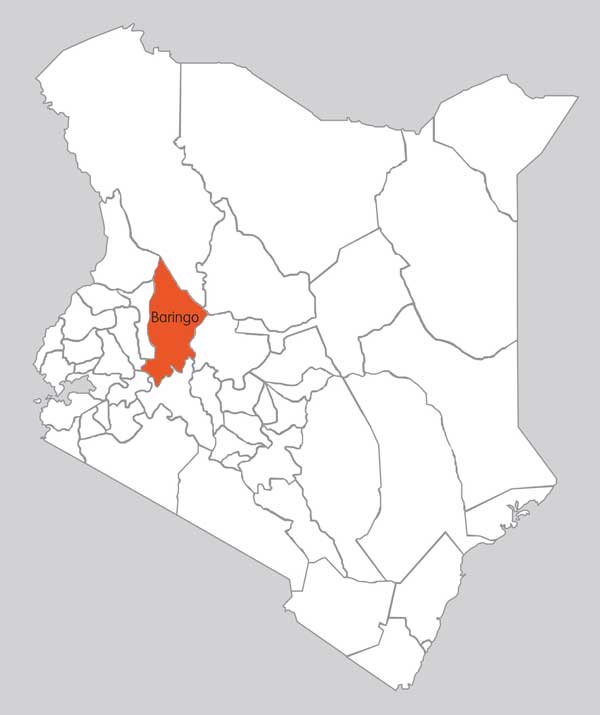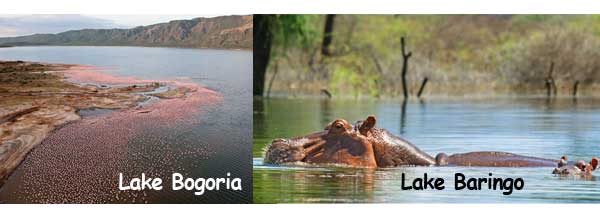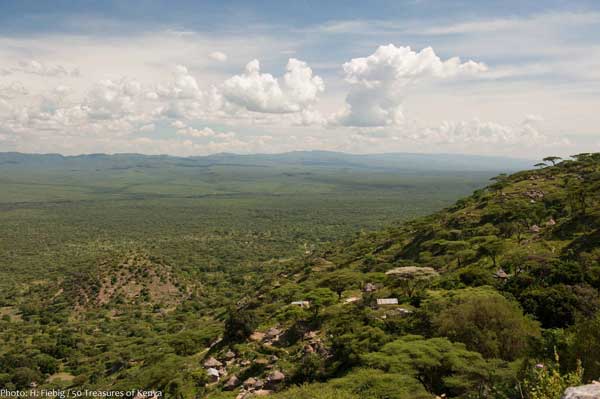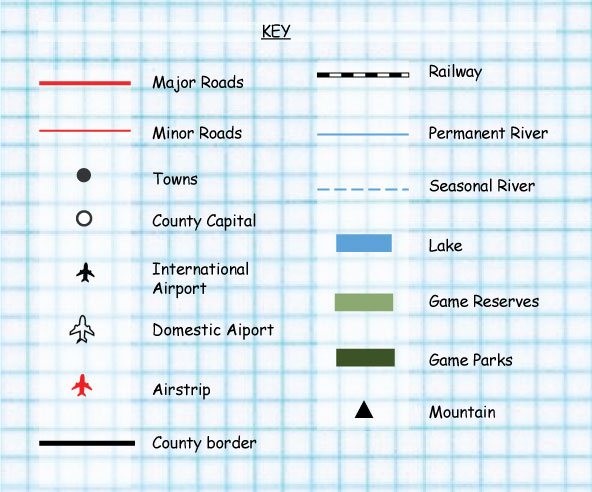- The name Baringo is derived from the word mparingo which means 'lake' in the language of Njemps who live in the areas' south and south-east of the lake.
- It is located in the former Rift Valley Province of Kenya, and it is about 270km north-west of Nairobi.
- It covers an area of 11,015.32 sq km with a population of 555,561 according to the Kenya Census data 2009.
- It borders eight counties; Samburu and Laikipia to the east, Turkana to the north and north east, Nakuru to the south, Elgeyo Marakwet to the west, West Pokot to the north west and Kericho and Uasin Gishu to the south west.

It consists of 6 constituencies
Rivers
Lakes

Mountains
Hills

Plains
Valleys



The dominant ethnic groups are the Pokots, Tugens, Endorois and Ilchamus. Pokots and Tugens are linguistically related groups of the larger Kalenjin tribe. These communities mainly keep livestock, although the people living in the highlands usually practice farming.
Other communities living in Baringo County include Turkana, Kikuyu, Meru, Luhya, Kamba and Luo. Most of these people live in Baringo’s urban centers and do business or are in formal and informal employment.
The economy of the County is agro-based. The main food crops grown are maize, pigeon peas, Irish potatoes, beans, sorghum, sweet potatoes, cassava and finger millet while the cash crops are coffee, cotton, macadamia and pyrethrum. Livestock products include honey, mutton, beef, as well as hides and skins.
Dressing
Clothing was made of the skins from domesticated or wild animals. The people, both male and female, wore earrings made of brass coils that stretched the earlobe down to shoulder level.
Participating groups came from different communities like the Sakasak, Sironoi, Kumbopsoo, Salawa, Lelmen, Kapyemit, Kiboino Eron and others. They were involved in traditional songs and dances with the purpose of bringing together local leaders, professionals, cultural ambassadors and the community, to promote culture and ecotourism in the region.
The Keiyo district had a total of almost 73 medicinal plant species used to treat 46 common human and three veterinary diseases. Leucas calostachys was the most widely used (17 medicinal uses) followed by Vachelia xanthophloea (10), Carissa edulis (9), Trimeria grandifolia (8), Terminalia brownii (7) and Rhamnus prinoides (6). Heartburn was treated by (17) f, cancer (9). (8) plants were used to either treat infertility in women or arthritis, Seven plants were used to treat peptic ulcers, hypertension, headache, chest congestion and colic pains.
Coffee, cotton, macadamia and pyrethrum
In the highlands, Coffee and Cotton are the main economic cash crop grown
Livestock kept in Baringo county mainly include:
Baringo is home to approximately 1 million livestock.
Fishing mostly takes place in Lake Baringo.
The major forests in Baringo County are the Tugen hills Forests in the Tugen Hills.
Also, there is Maji Mazuri's Koibatek forest which marks the most outward border of the County; Kericho and Nakuru County border points.
Lake Bogoria Game Reserve is home to rare kudus, hyenas, baboons antelopes, zebras, cheetahs leopards, monkeys, jackals and mongoose
Lake Bogoria National Reserve is in the Great Rift Valley and covers lake Bogoria
Lake Bogoria National Reserve is home to a huge population of wildlife including leopards, cheetahs, zebra, monkeys and the scarce kudu antelopes. The reserve has more than 350 bird species, including over 2 million lesser flamingos. Hot springs situated along the banks of Lake Bogoria are a major tourist attraction in the county.
Lake Bogoria Image Source - http://www.lakebogoria-hotel.com/lake-bogoria/
The 144sq km Lake Baringo offers beautiful scenery. It has nine islands, the largest of which is called Olkokwe - covering about 1,200 hectares. The island is home to the Ilchamus community.
Image source:
The lake supports 450 bird species including Paradise Flycatcher, Marabou Stocks, Hemphrick's Hornbill and many others. Dr. Richard Leakey’s Snake Park and Lake Baringo Reptile Park, both located on the lakeshore, are major tourist attractions in Lake Baringo.
Image Source - http://www.lake-baringo.com/
Tugen Hills offers beautiful sceneries to the tourists
Image source - http://www.50treasuresofkenya.org/kerio-valley-tugen-hills
It is a major attraction to visitors interested in learning about the Baringo history and culture.
Agriculture is the backbone of the Baringo County economy. In the highlands, cash crop farming of coffee and cotton are the main economic activities, although food crops such as maize and beans are also grown in the area. In the lowlands, livestock keeping is carried out to supplement crops farming.